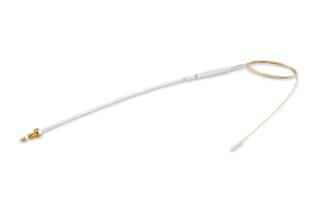
ACQUITY UPLC M-Class Columns are designed for optimal performance for nano- to micro scale liquid chromatographic separation for biomarker discovery and protein and peptide identification and characterization. All M-Class columns are designed for 15 kpsi (1,000 bar) operating pressure and handle pressure fluctuations during injection extremely well and thus provide superior longevity.
This specific offering contains Waters patented BEH Technology 300 Å pore, C18, 1.7um particles. BEH technology offers the highest retentivity for basic compounds and provides excellent peak shape at elevated pH mobile phases and is suitable for separations up to 80°C. BEH is the universal column choice for a variety of compounds.
Each batch is specifically QC tested using a gradient separation of a tryptic digest of cytochrome c to before being QC accepted as a Peptide Separation Column.
|
Chemistry |
C18 |
|
Separation Mode |
Reversed Phase |
|
Particle Substrate |
Hybrid |
|
pH Range Min |
1 pH |
|
pH Range Max |
10 pH |
|
Maximum Pressure |
15000 psi (1034 Bar) |
|
Endcapped |
Yes |
|
Silanol Activity |
Low |
|
Particle Shape |
Spherical |
|
Particle Size |
1.7 µm |
|
Endfitting Type |
Valco(male)|360um Open |
|
Pore Size |
300 Å |
|
QC Tested |
Peptide |
|
Format |
Column |
|
Surface Area |
90 |
|
System |
Nano/Micro |
|
Particle Technology |
BEH |
|
USP Classification |
L1 |
|
Inner Diameter |
75 µm |
|
Length |
250 mm |
|
Carbon Load |
12 % |
|
UNSPSC |
41115709 |
|
Application |
Peptide |
|
Brand |
ACQUITY UPLC M-Class |
|
Product Type |
Columns |
|
Units per Package |
1 pk |

ACQUITY UPLC M-Class Peptide BEH C18 Column, 300Å, 1.7 µm, 75 µm X 250 mm, 1/pk
Because they are created for the best performance for liquid chromatographic separation on a nano- to microscale, the ACQUITY UPLC M-Class Peptide BEH C18 Column is a great addition to your lab. For the identification and characterization of proteins as well as the development of biomarkers, the lab equipment provides the greatest levels of sensitivity, resolution, and repeatability. The nanoACQUITY UPLC® Systems are compatible with the lab equipment.
The right connections must be made to reduce peak tailing and inefficient operation in order to achieve optimal performance. This is significant because, in contrast to conventional flow chromatography, capillary-flow systems may necessitate greater attention to detail for good day-to-day operation. To provide exceptional performance, the item on this list incorporates patented Waters BEH Technology 300Å pore, C18, 1.7µm particles. Before being QC recognized as a Peptide Separation Column, each batch of the packing material used in the column's production is evaluated utilizing a gradient separation of a tryptic digest of cytochrome C.
A unique frit method is used to frit the ACQUITY UPLC M-Class Peptide BEH C18 Column, which is produced in accordance with rigorous specifications. Due to these strict requirements and the column's chemistry, it can tolerate high pressures. Moreover, it can manage pressure changes during injection quite well, which results in improved longevity.
Each ACQUITY UPLC M-Class Column is individually inspected to guarantee that it meets rigorous quality standards, ensuring that you only receive high-quality equipment. The column is produced in a closely watched and rigorously regulated atmosphere at a Waters facility that has ISO 9001 certification.
Visit our website to learn more about our wide range of products and to find out which ones complement the ACQUITY UPLC M-Class Column the best. You can shop for lab equipment using it as well.
You may also want to invest in the MassPREP E. coli Digest Standard.
What Is The pH Range For The ACQUITY UPLC M-Class Peptide BEH C18 Column?
The ACQUITY UPLC M-Class Peptide BEH C18 Column listed here is able to work well within the 1-10 pH range.
Is There A Maximum Pressure Recommended For The ACQUITY UPLC M-Class Peptide BEH C18 Column?
Waters recommends that the maximum pressure applied to the ACQUITY UPLC M-Class Peptide BEH C18 Column is not more than 15000 psi (1034 Bar).